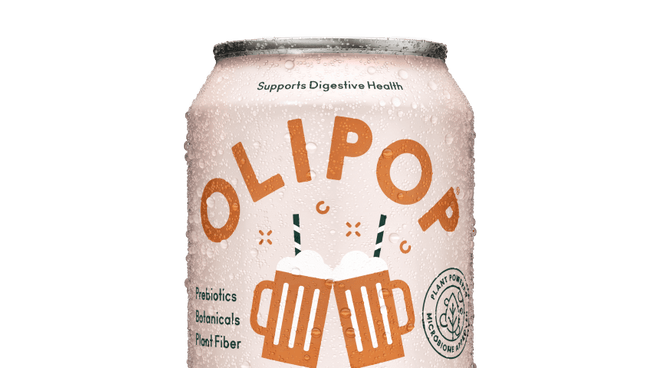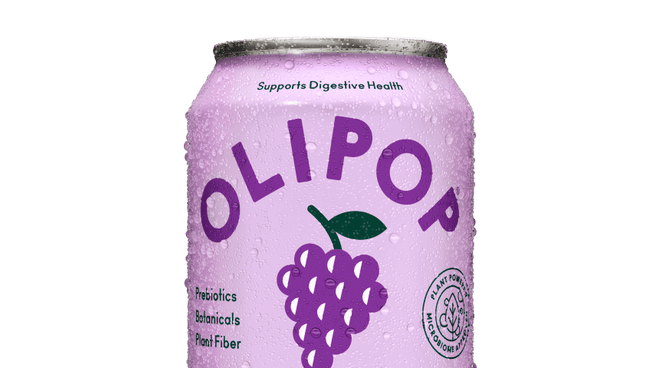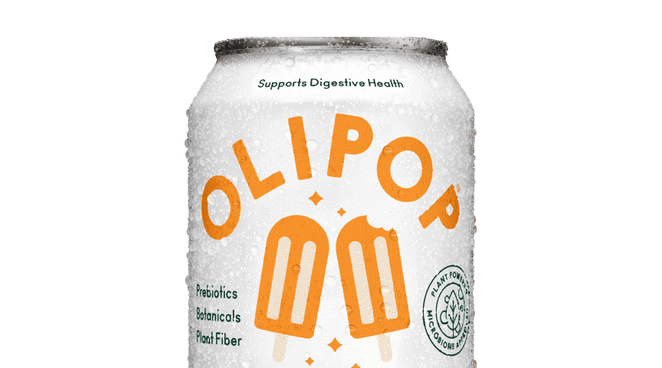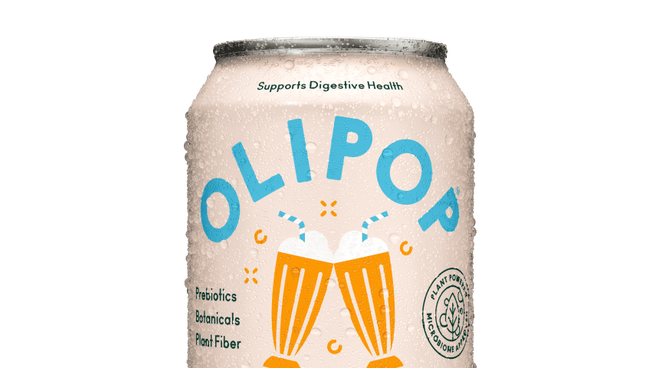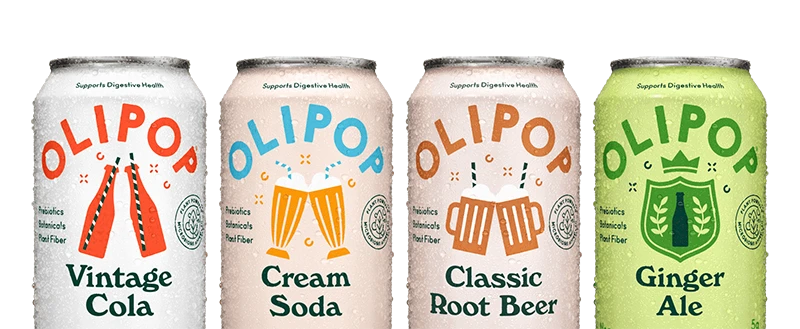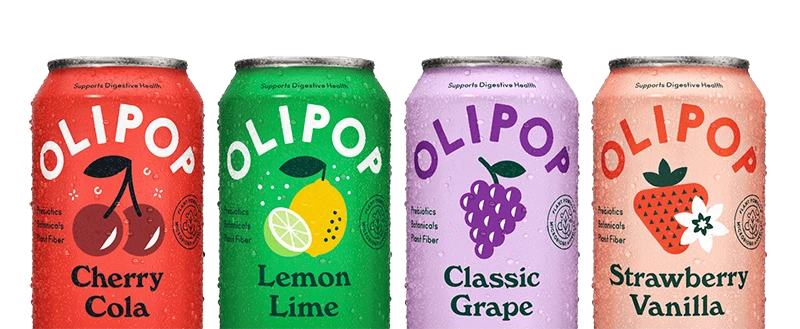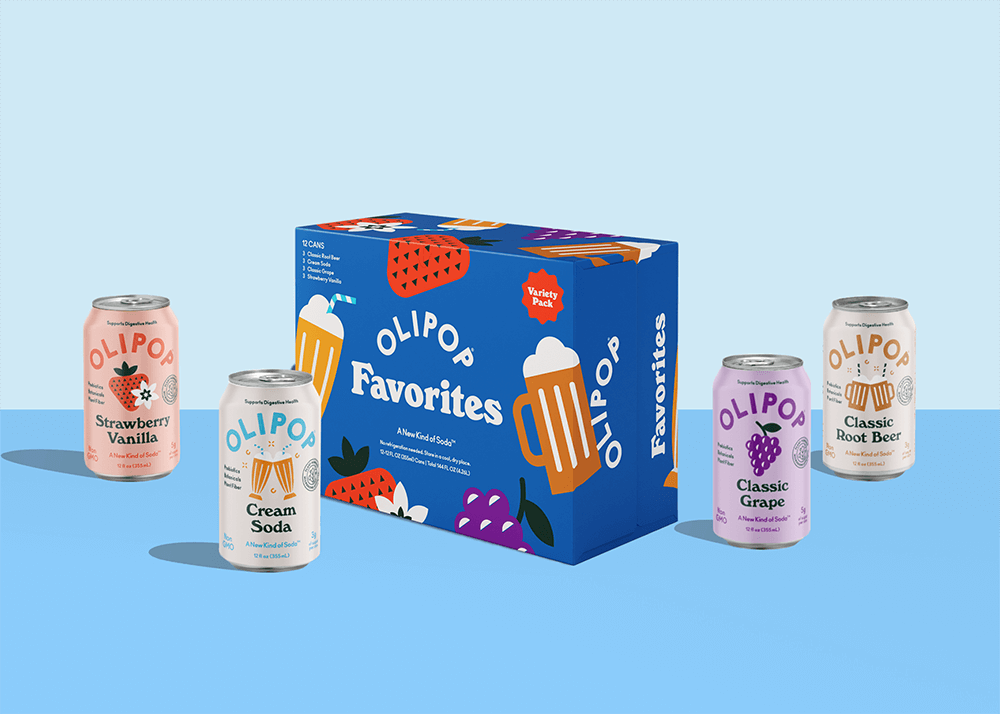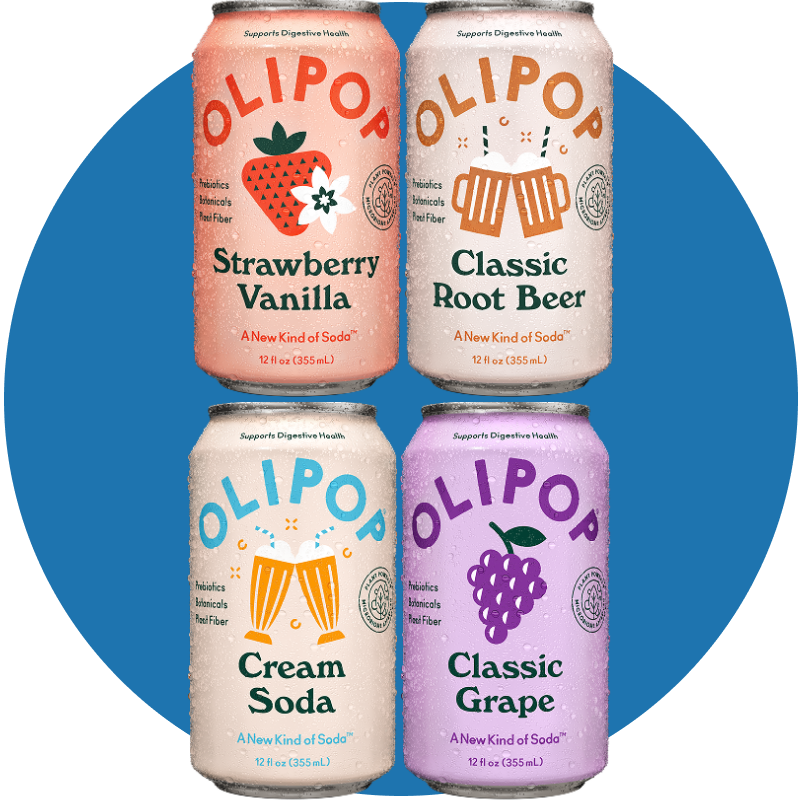You know fiber is good for you. You know you’re supposed to get plenty of it in your diet... but what exactly is fiber? Why is it such a big deal, and how much should you really eat per day?
That’s the question we’re here to help answer! Here’s everything you need to know, plus some high-fiber foods and drinks (hello, OLIPOP!) to add to your diet. Let’s get started:
What Is Fiber and Why Is It Important?
Fiber is an indigestible carbohydrate that comes from plant foods like fruits, vegetables, legumes, and whole grains. But unlike other carbohydrates, your body cannot break down fiber because it does not have the enzymes to do so. This means that fiber moves through the digestive tract undigested.[1] That’s good for digestive health because it helps move things along. And particular types of fiber, known as prebiotic fiber, serve as a food source for the beneficial bacteria that exist in your gut.
Curious for a deeper dive? Head to our blogs on fiber and prebiotics for more.
How Much Fiber Do I Need?
So, now that you know what fiber actually is, you want to know how much of it you actually need to consume, right? Healthy men and women under age 50 require 25 to 38 grams of fiber daily.[2]
According to the 2020-2025 USDA Dietary Guidelines for Americans, here’s the breakdown by age and gender:[2]
Recommended Daily Fiber Intakes for Women
- Ages 4-8: 17g of fiber
- Ages 9-13: 22g of fiber
- Ages 14-18: 25g of fiber
- Ages 19-30: 28g of fiber
- Ages 31-50: 25g of fiber
- Age 51+: 22g of fiber
Recommended Daily Fiber Intakes for Men
- Ages 4-8: 20g of fiber
- Ages 9-13: 25g of fiber
- Ages 14-18: 31g of fiber
- Ages 19-30: 34g of fiber
- Ages 31-50: 31g of fiber
- Age 51+: 28g of fiber
The problem is, more than 90% of women and 97% of men do not meet these recommended intakes for dietary fiber.[2] This is called the fiber gap, and we have a whole blog about it in case you’re curious to learn more!
Soluble vs. Insoluble Fiber
There are two kinds of fiber you need in your diet: soluble and insoluble fiber. Both are important, here’s why:
- Soluble Fiber: When it interacts with water, soluble fiber turns into a gel-like substance that moves slowly through the stomach and small intestines. Why is this a good thing? Consuming soluble fiber can help maintain healthy glucose levels and cholesterol already in the normal range.[3]
- Insoluble Fiber: Insoluble fiber does not dissolve in water. Instead, it bulks up stool and aids in the movement of foods through the digestive tract.[3]
There are no specific dietary recommendations for soluble vs. insoluble fiber. However, it’s important to eat a variety of fibrous foods, including whole grains, legumes, nuts, seeds, fruits, and veggies at each meal. When buying packaged food and beverages, look at the nutrition facts panel and aim for items that provide an excellent source of fiber per serving if possible.[4]
How Much Fiber Is Too Much?
There is no tolerable upper intake level set for dietary fiber. This means that the amount of fiber that is "too much" can vary from person to person. Consuming large amounts of fiber at one time—especially if your body isn’t used to a high-fiber diet—may lead to temporary GI symptoms until your gut adapts, such as occasional:
- Bloating
- Gas
- Abdominal cramps
- Constipation or diarrhea
- At excessive levels of fiber consumption, fiber may affect the absorption of essential minerals from foods such as iron, calcium, and zinc[5]
Adding fiber slowly to your diet and drinking plenty of water should help alleviate these symptoms if they are occurring. Working with a qualified healthcare professional, like a registered dietitian nutritionist, can help if you need assistance in planning a diet with adequate amounts of fiber.
But keep in mind that, as we mentioned, the average American is not meeting the recommended intake of dietary fiber. So, for most of us, the issue isn’t getting too much fiber but rather not enough.
High Fiber Foods & Drinks
Given our national averages, it’s highly likely that you’re not getting enough fiber. Good news, though: There is a long list of high-fiber foods and drinks you can add.
Here are some of our favorite fibrous foods (and drinks!):[6]
Fruits:
- Raspberries
- Blackberries
- Pears
- Apples (with the skin)
- Avocado
Vegetables:
- Green peas
- Broccoli
- Brussel sprouts
- Collard greens
Grains, seeds, and nuts:
- Whole-wheat spaghetti
- Barley
- Bran flakes
- Quinoa
- Oatmeal
- Whole-grain bread
- Chia seeds
Legumes:
- Navy beans
- Split peas
- Lentils
- Chickpeas
- Black beans
And don’t forget your beverage! No matter what type of OLIPOP is in your shopping basket (shelf-stable or refrigerated), you are getting 6 to 9 grams of fiber per serving, which meets the FDA's criteria for an excellent source of fiber.
Daily Fiber Intake: The Takeaway
Here’s the simple truth: most people need more fiber. For most adults, the goal is between 25 to 38 grams per day, yet over 90% of us aren’t getting enough.[2] But adding fiber to your diet doesn’t have to be complicated or boring. It’s about small, sustainable swaps that add up over time.
At OLIPOP, this is part of our mission. We know the fiber gap isn’t just a statistic, it’s a real issue affecting most Americans. That’s why every can of OLIPOP is crafted with a thoughtful blend of functional ingredients to help bridge the fiber gap in a way that’s genuinely enjoyable. With every sip, you’re one step closer to your daily fiber goal. We’ll drink to that!
Sources:
- Harvard T.H. Chan School of Public Health. (2022, April). Fiber. The Nutrition Source. https://nutritionsource.hsph.harvard.edu/carbohydrates/fiber/
- U.S. Department of Agriculture and U.S. Department of Health and Human Services. Dietary Guidelines for Americans, 2020-2025. 9th Edition. December 2020. Available at DietaryGuidelines.gov.
- Dietary fiber: Essential for a healthy diet. (2024, December 11). Mayo Clinic. https://www.mayoclinic.org/healthy-lifestyle/nutrition-and-healthy-eating/in-depth/fiber/art-20043983
- McKeown, N. M., Fahey, G. C., Slavin, J., & Van Der Kamp, J. (2022). Fibre intake for optimal health: how can healthcare professionals support people to reach dietary recommendations? BMJ, e054370. https://doi.org/10.1136/bmj-2020-054370
- Ioniță-Mîndrican, C., Ziani, K., Mititelu, M., Oprea, E., Neacșu, S. M., Moroșan, E., Dumitrescu, D., Roșca, A. C., Drăgănescu, D., & Negrei, C. (2022). Therapeutic Benefits and Dietary Restrictions of fiber intake: A State of the art review. Nutrients, 14(13), 2641. https://doi.org/10.3390/nu14132641
- USDA Nutrient Database. (2019). U.S. Department of Agriculture Agricultural Research Service. https://fdc.nal.usda.gov/
- Healthy men and women under the age of 50 require 25 to 38 grams of fiber daily. However, most Americans fall short of meeting these requirements.
- More than 90% of women and 97% of men do not meet these recommended intakes for dietary fiber.









